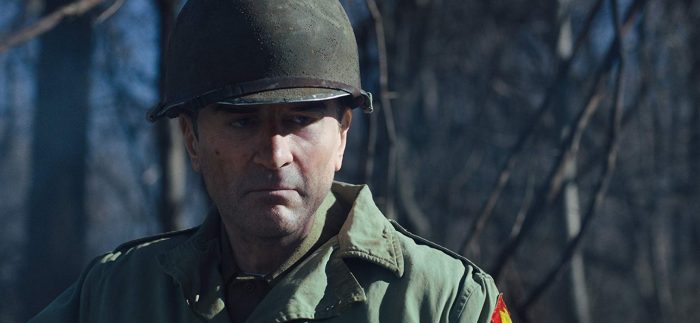
Digital de-aging is either the scourge of cinema or an exciting new tool for filmmakers, depending on whom you ask. But the effects in Martin Scorsese‘s new gangster epic The Irishman lie somewhere in between. This conversation comes on the heels of the technology’s busiest year yet, with studios smoothing out the faces of their stars in Captain Marvel, It Chapter 2, and Ang Lee’s upcoming Gemini Man. In each of the aforementioned films apart from Captain Marvel (thanks to Marvel Studios having almost perfected the tech), the de-aging has been roundly criticized, though perhaps not nearly as much as the effects in The Irishman.
When the first trailers for The Irishman were released by Netflix, the grumblings over Robert De Niro, Al Pacino, and Joe Pesci‘s silky-smooth skin and uncanny valley faces began, and were amplified when the streaming giant released stills of De Niro looking like a PS2-era video game character. But rest assured, the de-aging effects in The Irishman (mostly) work. At the very least, there is no other way that Scorsese could have made his latest masterwork.
The Irishman takes place over the course of 60 years, opening with its aged protagonist, hitman Frank Sheeran (De Niro), sitting in a retirement home sometime around the turn of the 21st century. As he reminisces about his life as a hitman for the mob, the film takes us back to the 1940s, with De Niro, Pesci, and Pacino playing characters 30, 40 years younger than their current ages. The movie skips around time, with each decade adding a few more grays and wrinkles to its main characters, and allowing us to spend the full three-and-a-half hours getting to know — and even care about — these morally bankrupt men.
At a press Q&A with Scorsese, De Niro, Pesci, Pacino, and producer Jane Rosenthal, Scorsese stated that the long road to making this film, which had been in development since roughly 2007, was a result of them waiting for the technology to catch up to their ambitions. That de-aging technology was provided by Industrial Light & Magic (ILM), Lucasfilm’s VFX and animation studio, and continued to evolve even through the 108-day production.
“It was slow in moving but not in a negative way,” Scorsese said. Producer Jane Rosenthal agreed, adding, “The technology did not slow us down. The technology kept evolving and kept changing and kept making things simpler.”
But the technology was only a prop for the work of De Niro, Pesci, and Pacino, whose outsized performances are essential to the magic of this film. But it takes a good hour into the film before you get used to those skin-smoothing, wrinkle-abolishing effects, particularly in the case of De Niro’s Frank Sheeran. It’s in part due to De Niro’s internal, reactive performance — Scorsese’s camera lingers on the actor’s face, which can only bring attention to the de-aging technology, especially in the harsh light of day. It’s only in wide shots and darkly lit scenes that you can truly become immersed in the film. With Pesci, who gives a similarly understated performance but goes through less noticeable de-aging, and Pacino, who gives such a showy, larger-than-life performance that you can barely register the digital effects, it isn’t as much of an issue. But Scorsese explained that he and his stars didn’t rely completely on the “lenses and computer imagery” to give the illusion of youth.
“It’s about posture, it’s about movement, it’s about clarity of the eyes, everything.” Scorsese recalled a day on set when Pacino, in the heat of the moment, hops out of his chair in the middle of a rant. After a few takes, stuntman Gary Tacon whispered to Scorsese that Pacino was “supposed to be 49.” A few more takes got them down to “62.” Scorsese said, “No, no, no. We gotta get it down to 49.”
But the main problem with The Irishman is that we remember what a 30-year-old De Niro performances was like — all electric energy and raw physicality. He seesaws between moody and menacing in Taxi Driver, he’s precise and powerful in Goodfellas, and his just shy of manic in The King of Comedy. In The Irishman, De Niro is a 76-year-old acting as a 30-something, and inevitably, brings with him the weight of his age. Still sporting his old-man scowl even in his memories of his 30s, the de-aging effects can smooth out his skin and turn his eyes a distractingly bright blue (to mimic the eye color of the reel Sheeran), but it can’t change the way that the 76-year-old actor carries himself. But, whether that is Scorsese’s intention or not, it adds another artistic layer to the film.
The Irishman is framed through the memories of an old man looking back on his life, alone and mostly immobile in a wheelchair. His memories of his younger self are distorted — he is remembering himself not as he was back then, but as a younger version of how he is now. The “young” Sheeran is a play on how memories become not an accurate reflection of how we were then, but a shadow of what we are now.
The post The De-Aging in ‘The Irishman’ Isn’t Perfect, But It is Essential appeared first on /Film.
from /Film https://ift.tt/2nQsSR5
via IFTTT
Comments
Post a Comment